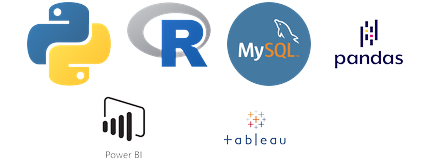Important Filter Functions in DAX in Power BI
Filter functions in DAX are used to perform advanced filtering and retrieve specific subsets of data for calculations or visualizations. Below are some key filter functions, explained with examples using a Sample Superstore dataset.
1. FILTER()
- Purpose: Returns a table that represents a filtered subset of a larger table.
- Example Use Case: Retrieve all orders with a discount greater than 10%.
Dataset:
| Order ID | Sales | Discount |
|---|---|---|
| 1 | 100 | 5% |
| 2 | 200 | 15% |
| 3 | 150 | 20% |
DAX Formula:
Filtered Orders = FILTER('Orders', 'Orders'[Discount] > 0.1)Output (Filtered Table):
| Order ID | Sales | Discount |
|---|---|---|
| 2 | 200 | 15% |
| 3 | 150 | 20% |
2. ALL()
- Purpose: Removes any filters that are applied to a table or column.
- Example Use Case: Calculate the percentage of total sales for each order by ignoring existing filters.
DAX Formula:
Percentage of Total Sales =
SUM('Orders'[Sales]) / CALCULATE(SUM('Orders'[Sales]), ALL('Orders'))Output:
| Order ID | Sales | Percentage of Total Sales |
|---|---|---|
| 1 | 100 | 20% |
| 2 | 200 | 40% |
| 3 | 150 | 30% |
Another Example of ALL()
Total Sales All Categories = CALCULATE(SUM('Orders'[Sales]), ALL('Orders'[Category]))In this example:
SUM('Orders'[Sales])calculates the total sales.ALL('removes any filters that might be applied to theOrders'[Category])Categorycolumn.
This measure will give you the total sales for all categories, ignoring any category filters. You can then use this measure in your visualizations to compare it with the filtered sales.
Feel free to let me know if you need more examples or any other information on DAX functions in Power BI!
3. CALCULATE()
- Purpose: Evaluates an expression in a modified filter context.
- Example Use Case: Calculate total sales where the discount is greater than 10%.
DAX Formula:
Total Sales with Discount > 10% =
CALCULATE(SUM('Orders'[Sales]), 'Orders'[Discount] > 0.1)Output:
| Order ID | Sales | Discount |
|---|---|---|
| 2 | 200 | 15% |
| 3 | 150 | 20% |
| Result: 200 + 150 = 350 |
4. VALUES()
- Purpose: Returns a single column table of unique values.
- Example Use Case: Get the unique customer IDs from the dataset.
Dataset:
| Order ID | Customer ID | Sales |
|---|---|---|
| 1 | C001 | 100 |
| 2 | C002 | 200 |
| 3 | C001 | 150 |
DAX Formula:
Unique Customers = VALUES('Orders'[Customer ID])Output (Filtered Table):
| Customer ID |
|---|
| C001 |
| C002 |
5. REMOVEFILTERS()
- Purpose: Clears filters from a specific column or table.
- Example Use Case: Calculate total sales without filtering by region.
Dataset:
| Order ID | Region | Sales |
|---|---|---|
| 1 | East | 100 |
| 2 | West | 200 |
| 3 | East | 150 |
DAX Formula:
Total Sales Ignoring Region =
CALCULATE(SUM('Orders'[Sales]), REMOVEFILTERS('Orders'[Region]))Output:
| Order ID | Region | Sales | Total Sales Ignoring Region |
|---|---|---|---|
| 1 | East | 100 | 450 |
| 2 | West | 200 | 450 |
| 3 | East | 150 | 450 |
6. KEEPFILTERS()
- Purpose: Retains existing filters and applies additional ones.
- Example Use Case: Apply multiple filters on a dataset.
DAX Formula:
Sales with Region =
CALCULATE(SUM('Orders'[Sales]), KEEPFILTERS('Orders'[Region] = "East"))Output:
| Order ID | Region | Sales | Sales with Region |
|---|---|---|---|
| 1 | East | 100 | 100 |
| 2 | West | 200 | 0 |
| 3 | East | 150 | 150 |
7. DISTINCT()
- Purpose: Returns a one-column table containing the distinct values in a column.
- Example Use Case: Count the distinct regions in the dataset.
DAX Formula:
Distinct Regions = DISTINCT('Orders'[Region])Output (Filtered Table):
| Region |
|---|
| East |
| West |
8. ISFILTERED()
- Purpose: Checks if a column is filtered.
- Example Use Case: Return sales only if a specific column is filtered.
DAX Formula:
Sales Only If Filtered =
IF(ISFILTERED('Orders'[Region]), SUM('Orders'[Sales]), BLANK())Output:
- If the
Regioncolumn is filtered (e.g., “East”), it shows sales for filtered regions only. - Otherwise, it returns a blank value.
Summary of Key Functions
| Function | Description |
|---|---|
FILTER() | Returns a subset of rows from a table. |
ALL() | Ignores all filters on a table or column. |
CALCULATE() | Evaluates an expression in a modified filter context. |
VALUES() | Returns unique values from a column. |
REMOVEFILTERS() | Clears filters from a specific table or column. |
KEEPFILTERS() | Retains existing filters while adding new ones. |
DISTINCT() | Returns distinct values from a column. |
ISFILTERED() | Checks if a column is filtered. |
These filter functions allow for detailed data manipulation and analysis in Power BI using DAX, especially for dynamic reports and visualizations.

